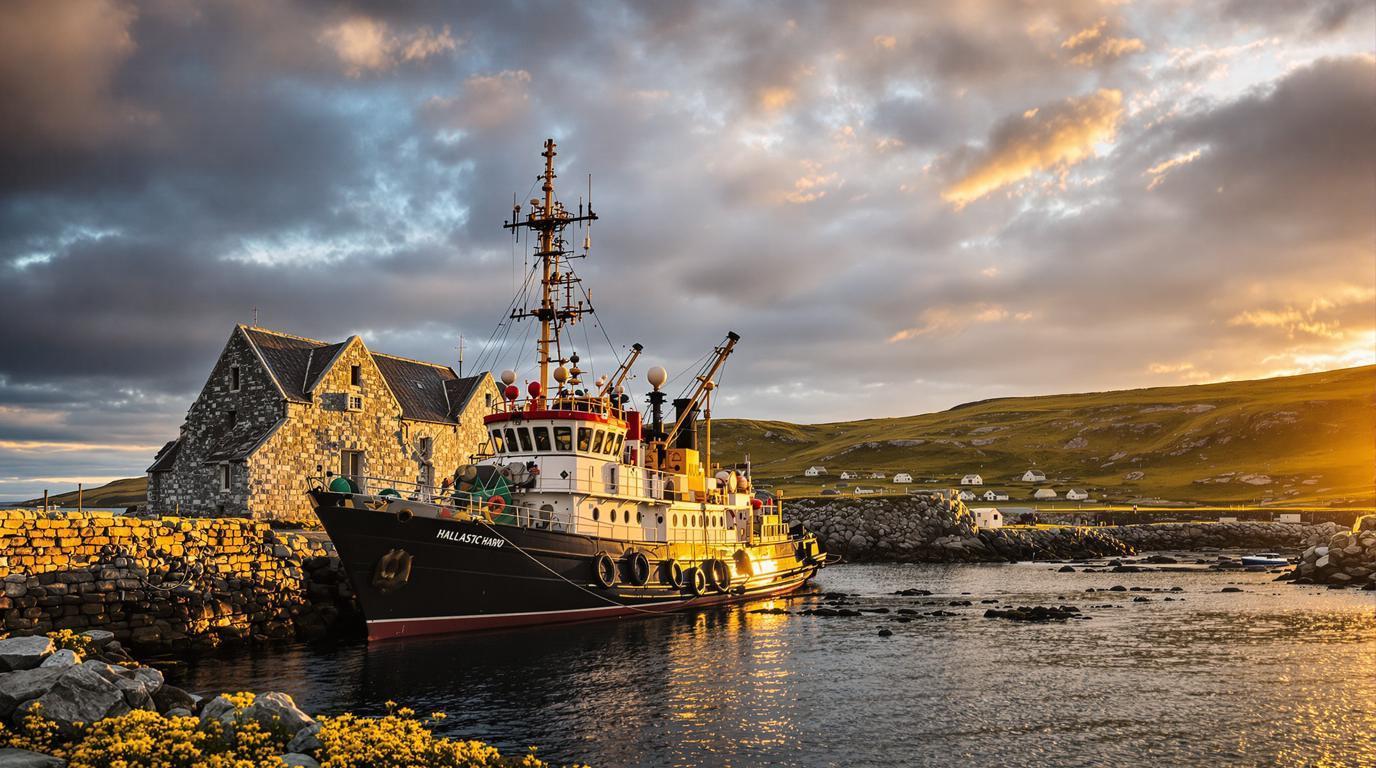The tiny island of Whalsay in the Shetland archipelago might be Scotland’s best-kept secret. Known affectionately as the “Bonnie Isle” by 19th-century fishermen who admired its summer bloom of yellow wildflowers, this five-mile-long gem harbors centuries of maritime heritage and unexpected Nordic charm.
Europe’s fishing powerhouse hiding in plain sight
Despite its modest size, Whalsay punches well above its weight in the fishing industry. Symbister harbor serves as home port to some of Europe’s largest pelagic trawlers, with the island’s economy revolving almost entirely around the sea. Walking along the bustling pier, you’ll witness fishermen mending nets and unloading catches in a tradition that spans generations.
“Our community lives and breathes with the rhythm of the tides,” says local fisherman Ian Irvine. “The sea isn’t just our livelihood—it’s our identity.”
5,000 years of history preserved in stone
Beyond its fishing prowess, Whalsay harbors archaeological treasures that few travelers ever discover. The island’s Neolithic houses at Pettigarths Field—Yoxie House and Beenie Hoose—offer a rare glimpse into prehistoric life. These remarkably preserved stone dwellings, unearthed in the 1950s, stand as silent witnesses to human settlement dating back to 3000 BCE, rivaling many more famous ancient sites in historical significance.
Where Baltic merchants once traded
The Hanseatic League Booth, situated on Symbister pier, reveals Whalsay’s surprising connection to medieval European trade networks. From the 15th to 17th centuries, German merchants established this trading post to exchange cloth and spirits for Shetland’s prized fish. Today, the restored booth offers a fascinating window into this forgotten chapter of commercial history.
A literary retreat for Scotland’s modernist poet
From 1933 to 1942, celebrated Scottish poet Hugh MacDiarmid found refuge on Whalsay during his most productive writing period. The island’s rugged landscape and isolated charm provided inspiration for some of his most significant works, adding a layer of literary significance to this unassuming fishing community that echoes other remote creative havens across Europe.
Britain’s most northerly golf course
Golf enthusiasts can claim a unique bragging right by playing a round at Whalsay Golf Club in Skaw—the most northerly 18-hole course in Britain. The undulating terrain and ever-present sea breezes create a challenging game against a backdrop of breathtaking coastal scenery that rivals more expensive island destinations without the crowds.
“You haven’t truly experienced Scottish golf until you’ve played a round where the North Sea meets the Atlantic,” shares local golf enthusiast Margaret Thomson. “Our course offers views you simply can’t put a price on.”
Where to stay and getting there
Accommodation on Whalsay is limited but memorable. The Auld Manse offers self-catering facilities in a refurbished 1600s building, providing an authentic taste of island life. Reaching this hidden gem requires a 30-minute ferry journey from Laxo on Mainland Shetland, with services running throughout the day. The isolation is part of the charm, much like other remote European islands that reward travelers willing to venture beyond conventional routes.
A photographer’s paradise
Dawn at Symbister Harbor captures working boats gliding out as golden light spills across the water. The wild northern coastline offers opportunities to spot otters among tide pools, while summer months blanket the island in wildflowers. The contrast between industrial fishing vessels and ancient stone ruins creates photographic compositions you won’t find in mainstream destinations.
Whalsay isn’t just another Scottish island—it’s a living museum where ancient history and modern maritime tradition coexist in perfect harmony. Here, away from tourist trails, you’ll discover the authentic pulse of Shetland life, where the past isn’t preserved behind glass but woven seamlessly into the fabric of everyday existence.
